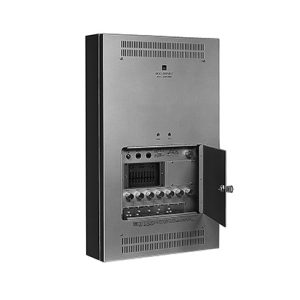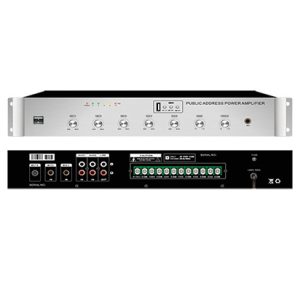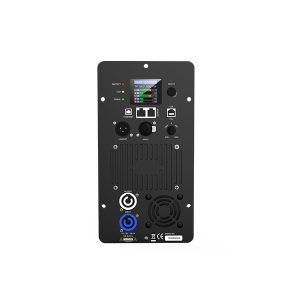Description
Mixing amplifiers, also known as mixer amplifiers or integrated mixer amplifiers, are audio devices that combine the functionalities of an audio mixer and a power amplifier in a single unit. They are commonly used in audio systems where mixing multiple audio sources and powering speakers are required, such as in PA systems, public address installations, conference rooms, and small to medium-sized venues.
Here are some key aspects and features of mixing amplifiers:
Audio Mixing: Mixing amplifiers feature built-in audio mixers that allow users to combine and adjust the levels of multiple audio sources. These sources can include microphones, musical instruments, media players, and other audio devices. The mixer section typically includes input channels with volume, EQ, and sometimes effects controls for each channel, providing flexibility in audio source management.
Power Amplification: Mixing amplifiers incorporate a built-in power amplifier to drive speakers directly. The power output of the amplifier section varies depending on the model and intended application, ranging from lower wattages suitable for small venues or background music systems to higher wattages for larger sound reinforcement setups.
Input and Output Connectivity: Mixing amplifiers offer a variety of input and output connections to accommodate different audio sources and speaker configurations. Common input options include microphone inputs (XLR or 1/4″ connectors), line-level inputs (RCA or TRS connectors), and sometimes digital inputs. Output connections can include speaker outputs (binding posts or speakON connectors), line-level outputs (RCA or XLR connectors), and auxiliary outputs for connecting additional equipment.
Control and Processing Features: Mixing amplifiers often include control features such as EQ (equalization), effects processing, and sometimes feedback suppression to enhance the audio quality and tailor the sound to the specific environment. Some models may also offer built-in audio processing functionalities like compression or limiting to control dynamics and prevent signal clipping.
Zone Control and Distribution: Certain mixing amplifiers provide zone control capabilities, allowing for audio distribution to multiple zones or areas. This enables independent volume control and source selection for different zones, making them suitable for applications where audio needs to be directed to specific areas within a venue or facility.
Compact and Portable Designs: Mixing amplifiers are available in various sizes and form factors, ranging from compact desktop units to rack-mounted solutions. This allows for flexible installation options depending on the available space and portability requirements.
Expandability and Integration: Some mixing amplifiers offer expansion capabilities, allowing for additional input or output modules to be added for increased connectivity or functionality. Additionally, they can be integrated with other audio equipment such as signal processors, external effects units, or recording devices to create a comprehensive audio system setup.
Mixing amplifiers provide a convenient and integrated solution for audio mixing and amplification in various applications. They eliminate the need for separate mixers and power amplifiers, simplifying system setup and reducing equipment clutter. Mixing amplifiers are commonly used in environments where space and budget considerations are factors, while still maintaining control over audio sources and powering speakers.
When selecting a mixing amplifier, it’s important to consider factors such as the number and type of inputs needed, power requirements for the speakers, control and processing features, expandability options, and compatibility with the desired audio sources and equipment






Reviews
There are no reviews yet.